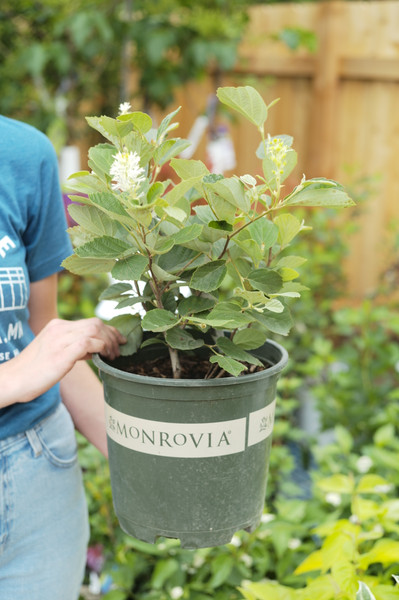Fothergilla
Posted by Jessie Jacobson on May 20th 2024
Fothergilla (Witch-Alder)
Revealing fragrant, bottlebrush shaped, white blooms and providing magnificent fall color, Fothergilla, Witch Alder reigns as a landscape must have. Fothergilla, a member of the witch-hazel family (Hamamelidaceae) can be used as a specimen plant or an informal hedge with three season interest.
Native to the southeastern United States, Fothergilla benefits from a well-drained, slightly acidic soil. It prefers full sun to maximize its crimson, orange, and yellow fall color, but it will also do just fine in part shade. An annual spring application of an acidic fertilizer like Espoma’s Organic Holly Tone, prevents the plant from yellowing in alkaline soils. Since the roots of Fothergilla are shallow and close to the surface, mulching helps retain moisture. To keep this plant healthy while maintaining adequate air circulation, pruning is necessary. Prune shortly after flowering to encorage blooms for the next season. Fothergilla is deer and rabbit resistant and rarely has significant insect or disease issues. Occasionally, smaller varieties may develop leaf spot. If this happens, treat with Bonide's Copper Fungicide to prevent disease from spreading.
Depending on the variety, Fothergilla grows between 2 and 5 ft tall and wide with a rounded form. This slow growing shrub features eye-catching spikes of honey-scented white flowers which appear in early spring prior to leafing. Its leaves are a rounded, leathery blue-green turning bright red, orange, and yellow in the fall.
Happy planting. See you at Tonkadale.

